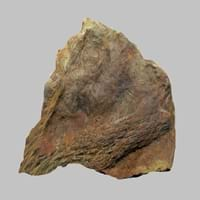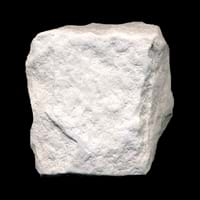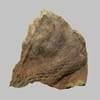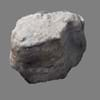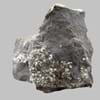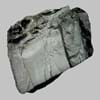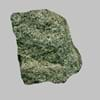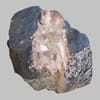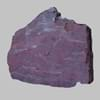Definition
Definition
Siltstone can be defined as a fine-grained sedimentary rock which mainly consists of consolidated silt
Diatomite is a fine-grained sedimentary rock which is formed from consolidated diatomaceous earth
History
Origin
Unknown
Germany
Discoverer
Unknown
Unknown
Etymology
From English word silt and stone and from Proto-Indo-European root sal and stainaz
From diatom + -ite1
Class
Sedimentary Rocks
Sedimentary Rocks
Sub-Class
Durable Rock, Hard Rock
Durable Rock, Soft Rock
Family
Group
Not Applicable
Not Applicable
Other Categories
Fine Grained Rock, Opaque Rock
Fine Grained Rock, Opaque Rock
Texture
Texture
Clastic
Clastic or Non-Clastic
Color
Brown, Red, Reddish Brown
Grey, White, Yellow
Maintenance
Less
Less
Durability
Durable
Non-Durable
Water Resistant
Yes
No
Scratch Resistant
Yes
No
Stain Resistant
No
No
Wind Resistant
Yes
No
Acid Resistant
Yes
No
Appearance
Rough
Soft
Uses
Architecture
Interior Uses
Decorative Aggregates, Interior Decoration
Decorative Aggregates, Homes, Interior Decoration
Exterior Uses
As Building Stone, As Facing Stone, Garden Decoration
Garden Decoration, Paving Stone
Other Architectural Uses
Curbing
Curbing
Industry
Construction Industry
Building houses or walls, Cement Manufacture, Construction Aggregate, for Road Aggregate, Making natural cement, Raw material for the manufacture of mortar
As Dimension Stone, Cement Manufacture, Construction Aggregate, for Road Aggregate, Landscaping, Making natural cement, Source of calcium
Medical Industry
Not Yet Used
Not Yet Used
Antiquity Uses
Artifacts, Sculpture, Small Figurines
Artifacts
Other Uses
Commercial Uses
Raw material for the manufacture of mortar, Soil Conditioner
Alumina Refineries, Animal feed filler, As a Feed Additive for Livestock, Creating Artwork, Drawing on blackboards, Fire resistant, Gymnasts, athletes and mountain climbers use for grip, In aquifers, Soil Conditioner, To ignite fire, Used as a filter medium, Used as an insecticide, Whiting material in toothpaste, paint and paper
Types
Types
Not Available
Not Available
Features
Available in Lots of Colors and Patterns, Easily splits into thin plates, Generally rough to touch, High silica content, Very fine grained rock
Clasts are smooth to touch, Is one of the oldest rock, Smooth to touch, Very fine grained rock
Archaeological Significance
Monuments
Not Yet Used
Not Yet Used
Famous Monuments
Not Applicable
Not Applicable
Sculpture
Used
Not Yet Used
Famous Sculptures
Data Not Available
Not Applicable
Pictographs
Not Used
Used
Petroglyphs
Not Used
Used
Figurines
Used
Not Yet Used
Fossils
Present
Present
Formation
Formation
Siltstone is a type of sedimentary rock which is formed from fine rock particles. As the particles of eroded rock travel along with water, the edges of the rock are worn-out by water into a rounded shape.
Diatomite rock formed from the skeletal remains of single celled plants called diatoms. When diatoms die, their skeletal remains sink to the bottom of lakes and oceans etc. hence forming diatomite deposit.
Composition
Mineral Content
Calcite, Clay, Clay Minerals, Feldspar, Micas, Quartz, Sand, Silica, Silt
Calcite, Clay, Clay Minerals, Quartz, Sand
Compound Content
Aluminium Oxide, CaO, Iron(III) Oxide, Potassium Oxide, MgO, Sodium Oxide, Silicon Dioxide
Ca, NaCl, CaO
Transformation
Metamorphism
No
No
Types of Metamorphism
Not Applicable
Not Applicable
Weathering
Yes
Yes
Types of Weathering
Biological Weathering, Chemical Weathering, Mechanical Weathering
Biological Weathering, Chemical Weathering, Mechanical Weathering
Erosion
Yes
Yes
Types of Erosion
Chemical Erosion, Coastal Erosion, Glacier Erosion
Chemical Erosion, Coastal Erosion, Wind Erosion
Properties
Physical Properties
Hardness
6-7
1
Grain Size
Fine Grained
Very fine-grained
Fracture
Conchoidal
Not Available
Streak
White
White
Porosity
Highly Porous
Highly Porous
Luster
Dull
Dull
Cleavage
Not Available
Non-Existent
Toughness
2.6
1
Specific Gravity
2.54-2.73
2.3-2.4
Transparency
Opaque
Opaque
Density
2.6-2.7 g/cm3
2.49-2.51 g/cm3
Thermal Properties
Specific Heat Capacity
Not Available
0.90 kJ/Kg K
12
Resistance
Heat Resistant, Impact Resistant, Pressure Resistant, Water Resistant
Heat Resistant
Reserves
Deposits in Eastern Continents
Asia
China, India, Kazakhstan, Mongolia, Russia, Uzbekistan
Brunei, India, Indonesia, Malaysia, Singapore, Thailand, Vietnam
Africa
Namibia, Nigeria, South Africa
Cameroon, Chad, Ghana, Kenya, Malawi, Sudan, Tanzania, Togo, Zambia, Zimbabwe
Europe
Austria, Denmark, Germany, Great Britain, Netherlands, Norway, Poland, Sweden, Switzerland, United Kingdom
England, France, Germany, Spain, United Kingdom
Others
Greenland
Not Yet Found
Deposits in Western Continents
North America
Canada, USA
Canada, USA
South America
Brazil
Colombia
Deposits in Oceania Continent
Australia
New South Wales, New Zealand
Adelaide, New Zealand, Queensland, Tonga, Victoria, Yorke Peninsula
|
||
|
||
|
